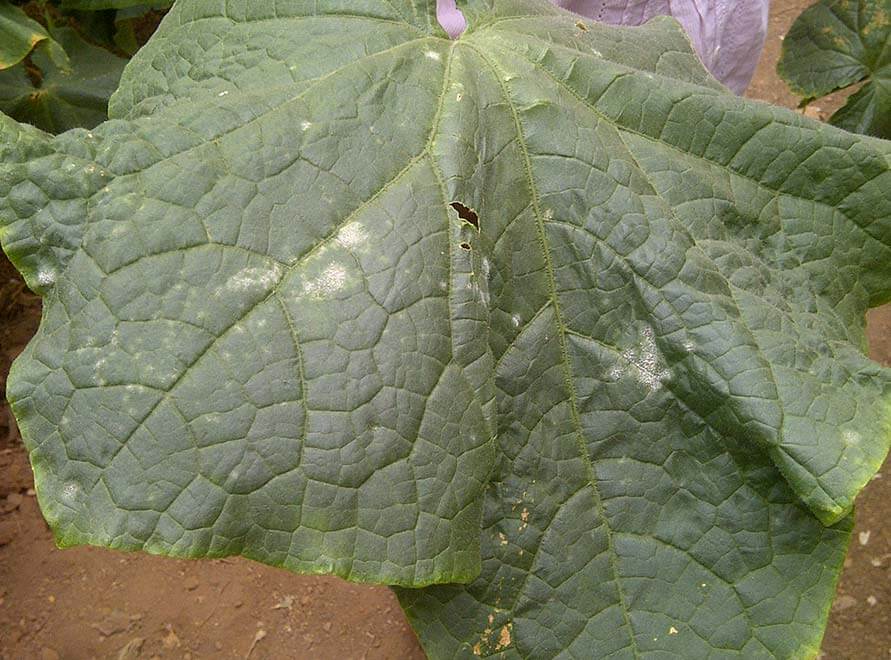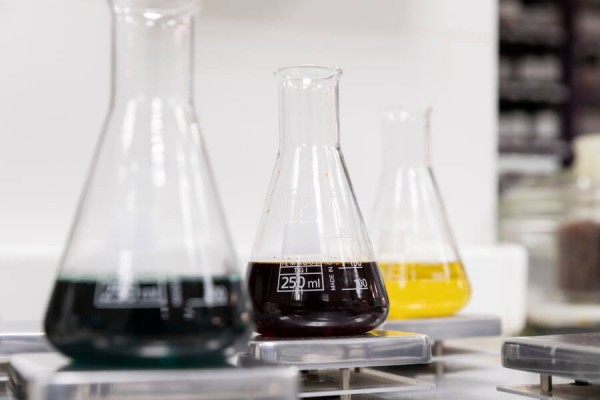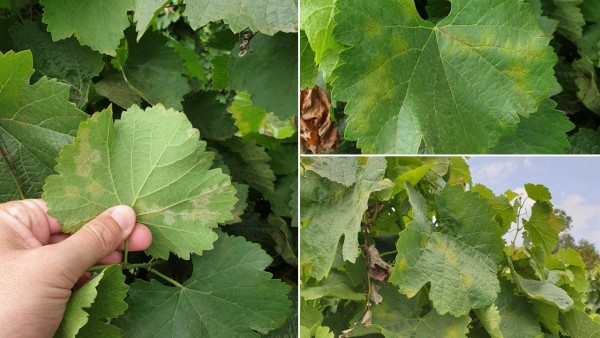Cucumber powdery mildew: how to prevent and control the disease

Visible symptoms of powdery mildew on cucumber leaves
Powdery mildew on cucumber is a disease caused by two pathogens: Erysiphe cichoracearum and Podosphaera xanthii. We are talking about a parasitic fungus that settles in the plant and benefits from its own vegetable mechanism: it penetrates the cells, consumes nutrients and causes the development of a disease that affects the plant’s yield.
Controlling this cucumber disease requires prompt and effective action through tools such as Septum, a Siepasa natural solution with fungicidal action that stands out for its powerful preventive and curative effect in controlling the pathogen.
Powdery mildew is a very common disease of cucurbits. As in the case of other fungi, powdery mildew requires humidity to grow and develop, so the risk of its appearance is higher in areas with high humidity, after episodes of persistent rainfall and in environments with temperatures between 10-20 ºC.
Accordingly, the appearance of powdery mildew is more common in spring, late summer or early autumn, with milder temperatures and regular rainy spells. Shady, poorly ventilated or over-irrigated areas are even more susceptible to this cucumber disease.
How to detect the disease
Identifying powdery mildew on cucumber is fairly simple because the disease will cover the leaves, fruits and branches of the plant with a kind of white veil reminiscent of ash.
The disease is most visible on both sides of the leaf, where the characteristic white powder usually gives way, when removed, to yellowish spots. The presence of this cucumber disease reduces the plant’s photosynthetic capacity and hinders its respiration. In practice, the leaves end up drying out and the plant’s production capacity is affected, preventing the rest of the fruit from optimal development.
As with the other diseases and fungi that attack the cucumber, there are a series of measures aimed at prevention and monitoring of the plant’s health status. It is vital to remove and get rid of those parts affected by powdery mildew on cucumber to prevent the wind from spreading them and reaching the other plants.
Treatments against powdery mildew on cucumber
Faced with a strong attack of the pathogen, the aforementioned management and crop-growing measures may be insufficient to prevent the disease from advancing. To control it, Seipasa recommends Septum, a powerful natural solution with fungicidal action where the key molecules from the extract of Equisetum arvense have been isolated with the optimal balance and equilibrium to ensure maximum product efficacy.
Septum is a specific and balanced formulation of phenols, flavonoids, saponins and silicic acid, as key elements of the broad synergistic complex of molecules that are part of its active ingredient.
Thanks to its preventive effect, Septum prepares the plant and provides an additional tool for optimal response: it provides structural stability to plant cells and mechanical resistance to fungal propagation, as well as triggering physiological defence responses.
Septum acts with a twin curative effect, since it causes the rupture and dehydration of fungal tissues and halts the sporulation of the phytopathogenic fungus that causes powdery mildew on cucumber.
The best way to prevent its appearance is to maintain strong and healthy plants. On spotting the first symptoms or conditions that favour its appearance, it is advisable to act and apply disease control strategies. What about you, what is your experience with disease control strategies in cucumber?




